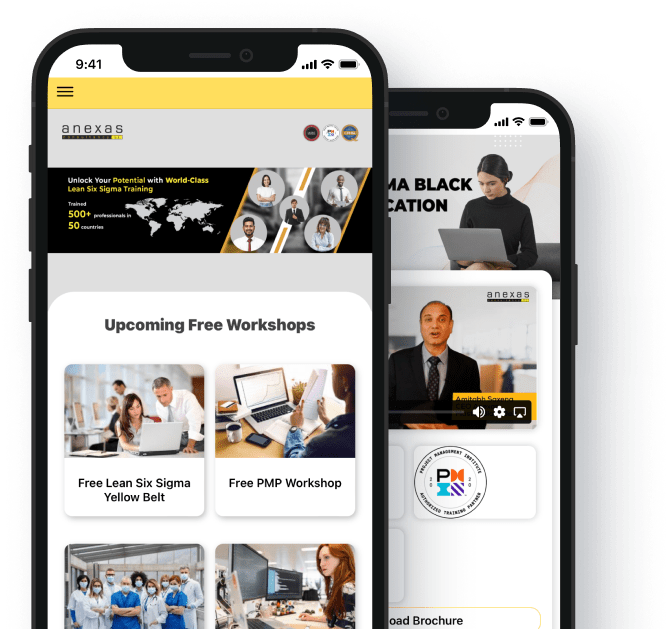Failure Modes And Effects Analysis
FMEA- All possible failures in a design or a process or even a product can be detected using a smart approach called the FMEA or Failure Mode and Effect Analysis. Using the FMEA approach, one can document the current knowledge and actions about the risk and failures and use it for continuous improvement. Almost all the big companies use FMEA to assess and prevent risks. Ford applied the same approach to processes (PFMEA) to consider potential process induced failures prior to launching production. FMEA prioritizes the seriousness of a risk based on its consequences, the frequency of their occurrence,and their detectability. The main goal here is to take actions to eliminate or reduce failures, starting with the ones at the highest-priority. FMEA is used during design to prevent failures. It is also used for control, before and during ongoing operation of the process.
Examples Of Failure Modes And Effects Analysis
Design FMEA
Process FMEA
Functional FMEA
Here Are Some Tips For Lean Six Sigma Interview
Training Options
Self Paced Learning
- Recorded Sessions of complete Lean Six Sigma Green Belt- By Amitabh Saxena.
- Project guidance with Amitabh Saxena.
- Certified Lean Six Sigma Green Belt Certification by Anexas Europe.
- Lifetime access to learning videos.
- Training material provided.
- One FREE online session with Amitabh Saxena one day every week to clarify queries.
Online Live Training
- 20-25 hours for Course completion.
- Live interaction with instant query clarification.
- Certification from Anexas Europe.
- Free project completion during the training.
- Access to learning videos.
- Lean Six Sigma Green Belt Project completion certificate.
- One free session with Amitabh Saxena.
- Diverse training batch.
Corporate Training
- Customized duration for the course depending on the organization.
- Live interaction with instant query clarification with Amitabh Saxena.
- Company Specific training with company related examples and case studies for better understanding.
- Certified Lean Six Sigma Green Belt certificate by Anexas Europe.
- Project completion to enhance Leadership and major
- Lean Six Sigma skills and techniques.
- Lean Six Sigma Green Belt Project completion certificate by Anexas Europe.
- Lifetime access to learning videos.
Lean Six Sigma Green Belt Course Content
Module 1: Introduction
- Introduction to class
- Introduction to Anexas
Module 2: Course Overview
- Course purpose & objectives
- What is Six Sigma
- History of Six Sigma
Module 3: Why Six Sigma
- Estimating process sigma
- Understanding Variation
Module 4: DMAIC
- Overview of DMAIC
- Overview of DMADV
- Case study
- DMAIC storyboard template
Module 5: Start Your Project
- Project Selection Criteria
- Team charter
- Project Charter
- Elements of Project Charter
Module 6: Process Basics
- Quality, systems, and processes
- Work as a process
Module 7 : Understanding the Voice of the Customer
- What is VOC and importance
- Defining the customers
- VOC data collection plan
- Reactive/proactive data collection systems
- Analyzing customer data – affinity diagram
Module 8: Understanding VOC
- Kano model
- Defining CTQs
- Setting specifications for CTQs
- VOC data collection plan
Module 9: Process
- Understanding Processes
- SIPOC
- Examples on SIPOC
Module 10: Define
Define
Module 11: Measure
- Basic statistics and introduction to Minitab
- Normal distribution
- Mean and standard deviation
- P-values
Module 12: Data Collection
- How data can help
- Data characteristics
- Five-step data collection process
- Step 1: Clarify Data Collection Goals
- Stratifying data
- Types of data
- Step 2: Develop Operational Definitions and Procedures
- Operational definitions
- Sampling approaches
- Determining sample size
- Population versus process samplingChecksheets
- Step 3: Validate the Measurement System
- Problems with measurement
- Desired measurement characteristics for continuous variables
- Gage R&R study
- Gage linearity study
- Checking a measurement system for discrete data
Module 13: Data Analysis
- Time-ordered data
- Understanding variation
- Variation versus specifications
- Taguchi Loss Function
- Types of variation, appropriate responses
- Special cause, common cause
- Plots of variation
- Control charts
- Specifications and control limits
Module 14: Analyze
- Develop a focused problem statement
- Identify potential causes
- Brainstorming, Five Whys
- Understand relationships between potential causes
- Might-cause check
- Cause-and-effect diagram
- Tree diagram
- Prioritizing Input Variables
Module 15: Verifying Causes
- Verifying cause-and-effect data
- Histograms
- Scatter plots
- Pareto Charts
- Box Plots
Module 16: Review and practice Process Analysis
- Process maps
- Identifying Value-Added path
- VA/NVA analysis
- Identifying flow issues
Module 17: Process Analysis
- 8 wastes
- Cycle time
- Bottlenecks
- Value Stream Mapping (VSM)
Module 18: Improve
- Involving people
- Lean solutions
- Generating solution alternatives
- Evaluating solutions
- Prioritization matrix, Pugh matrix
- Task and timeline planning
- Budget and resource planning
- Planning for change
- Planning to check
- Potential problem analysis
- Piloting
- Implementing the plans
Module 19: Evaluating results
- Quantifying results
- Evaluation and reactions
Module 20: Control
- Link improvement to management system
- Methods for monitoring and control
- Ongoing data collection, process control
- Variation and individuals charts
- Control charts for high-volume processes with subgroups: x bar and r charts
- Control charts for discrete data: p, np, c, and u charts
Module 21: Communication and Future Plans
- Project closure
- Closure checklist



